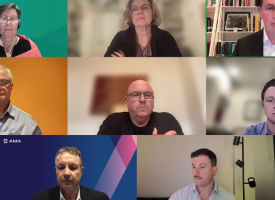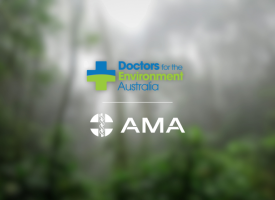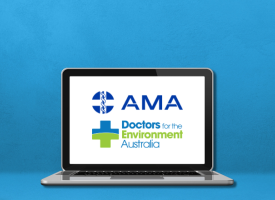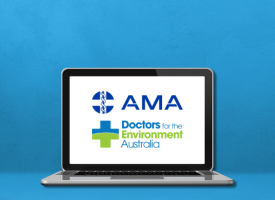State government addresses our advocacy priorities
It’s a mark of successful advocacy when the Minister not only acts on our calls but writes a seven-page letter detailing the government’s response to specific priority items in our Budget Submission 2024-25.

It’s a mark of successful advocacy when the Minister not only acts on our calls but writes a seven-page letter detailing the government’s response to specific priority items in our Budget Submission 2024-25.
The letter outlines “targeted investment in initiatives” set out in the Queensland Budget that Health Minister Shannon Fentiman says align with our identified priority areas.
Below is a summary of the Minister’s response to each priority area.
Priority 1 – Workforce
$1.7 billion to retain the current workforce, build and attract new talent pipelines and innovate new ways to deliver healthcare.
This includes:
- $1.059 billion to recruit more than 700 extra doctors, 2,600 nurses and midwives and 1,000 more allied health staff.
- $24 million to bolster Queensland’s primary care services by incentivising trainees to undertake GP training. You can read more about our calls for this here.
- $64 million to implement a new electronic workforce system for frontline staff.
- ‘Mapping of the medical workforce’ project to collate and integrate data on the full continuum of the medical workforce across Queensland.
Priority 2 – Training Pathways
- $5.25 million to create additional training positions to support rural generalist GP trainees to undertake advanced training in anaesthetics.
- Implementation of the Student in Medicine role to provide an alternate model of care to support the clinical workforce.
- Implementation of an Aboriginal and Torres Strait Islander intern recruitment initiative to provide final year medical students the chance to undertake their internship at a hospital close to country.
- Evaluation of the Townsville HHS Indigenous Interns Pathway Program pilot.
Priority 3 – Leadership
- Two cultural safety workshops for clinical leaders across the system.
Priority 4 – Wellbeing
- Independent review of Sexual Assault Policies and Procedures in Queensland Health which we welcomed in March 2024. You can read our full response here.
- Improved support mechanisms for the International Medical Graduate (IMG) workforce cohort, including the establishment of an IMG Working Group to ensure priority actions within Queensland Health are informed by expert advisers, including IMGs.
- Legislative obligations on HHS boards to promote a culture and implement measures to support the health, safety and wellbeing of staff in public health facilities.
Priority 5 – Primary-tertiary integration
- $20 million over four years to enhance patient flow through hospital discharge initiatives.
- Continued implementation of the Patient Care Facilitator initiative we recommended in our Ramping Roundtable Action Plan.
- We are still awaiting implementation of two key recommendations from our Ramping Roundtable – having hospitals run at 90 per cent capacity and 24/7 operation of hospitals to allow for out-of-hours discharges.
- We call on the Government to implement more of our initiatives set out in our Advocacy Priorities 2024-26.
Priority 6 – Prevention
In line with our stance that access to high quality primary care is essential for preventative health and should be an investment priority, the government has:
- Prioritised key social determinants of health in their First Nations First Strategy 2032 to improve the health and wellbeing of First Nations peoples in line with the National Agreement on Closing the Gap.
- Invested $135.9 million for the rollout of free vaccinations through the Meningococcal B Vaccination and Paediatric RSV Prevention programs, and to support the continuation of the free influenza vaccine. We also called for free whooping cough vaccinations to protect those not currently covered under the National Immunisation Program.
Priority 7 – Collaborative, evidence-based practice
The government has implemented initiatives to further improve patient flow and bed capacity. These include additional funding for senior doctors and nurses in emergency departments, patient care facilitators, rapid access services, a surgical rapid assessment unit, extended hours of medical imaging and timely patient transitions – most of which we recommended in our Ramping Roundtable Action Plan.
We also welcomed their recent announcement to roll out Brisbane’s virtual emergency department model across the state.
Priority 8 – Digital integration
The Queensland Government has plans to work with the Federal Government on modernising the My Health Record. It has also committed $13.6 million over four years to ensure security capabilities and technologies are kept up to date with healthcare security needs. We will continue to advocate for more digital improvements in line with our Budget Submission and Advocacy Priorities in the coming financial year.
Priority 9 – First Nations health
- $324.7 million over four years to target health equity for First Nations Queenslanders.
- Evaluation of the Townsville HHS Indigenous Intern Pathway.
- Investment and support for the Institute for Urban Indigenous Health (IUIH) and the Queensland Aboriginal and Islander Health Council (QAIHC) to establish First Nations health and wellbeing hubs.
Priority 10 – Women’s health
- $247.9 million in new funds for women’s health report.
- $41.8 million to assist women to access information and termination of pregnancy care that meets their needs.
- $42 million over four years to bring maternity services closer to home for remote, rural and regional women.
- Since receipt of the Minister’s letter, the government has announced four nurse-led, walk-in clinics as part of its Queensland Women and Girls’ Health Strategy 2032. These clinics will be available free to all Queenslanders. We continue to argue this funding would have been more valuably invested in supporting the employment of women’s health nurses in existing general practices around the state.
Priority 11 – Climate and sustainability
The Office of Hospital Sustainability (OHS), which we successfully advocated for in 2022, continues to actively work with HHSs to guide and support the mitigation and reporting of carbon emissions generated through HHS operations.
The letter also highlights the OHS’s commitment to continue working closely with AMA Queensland to progress the sustainability agenda across Queensland Health. This includes hosting a sustainability summit for Queensland Health leaders in 2024.
Priority 12 – LGBTQIASB+ health
In response to the work of our LGBTQIASB+ Working Group and calls for LGBTQIASB+ support, funding of $6.8 million is being allocated towards gender affirming care that is tailored and more accessible for LGBTQIASB+ communities.
The government has committed to delivering this through a combination of face-to-face, online and telehealth services that will provide targeted support for LGBTQIASB+ people.
Priority 13 – Aged and end-of-life care
- Increasing the palliative care eligibility access period for all services from three months to 12 months and improving access to the Medical Aids Subsidy Scheme.
- Investing $12.8 million over four years to continue Specialist Palliative Care in Aged Care (SPACE).
- Investing an additional $18 million over four years to meet the demand of the Voluntary Assisted Dying Program.
Priority 14 – Substance related harm
- $1.645 billion over five years to improve mental health, alcohol and other drug services and suicide prevention initiatives.
- $211.8 million over five years to uplift alcohol and other drug service capacity and capability.
- $1 million for drug checking services.
Expanded Police Drug Diversion Program to include all illicit drugs, not just cannabis.
We appreciate the time and consideration that went into this letter and its clear recognition of AMA Queensland’s contribution to improving health policy in our state.
We look forward to ongoing collaboration with both sides of politics in the lead-up to the 26 October election to improve health outcomes for all Queenslanders.



